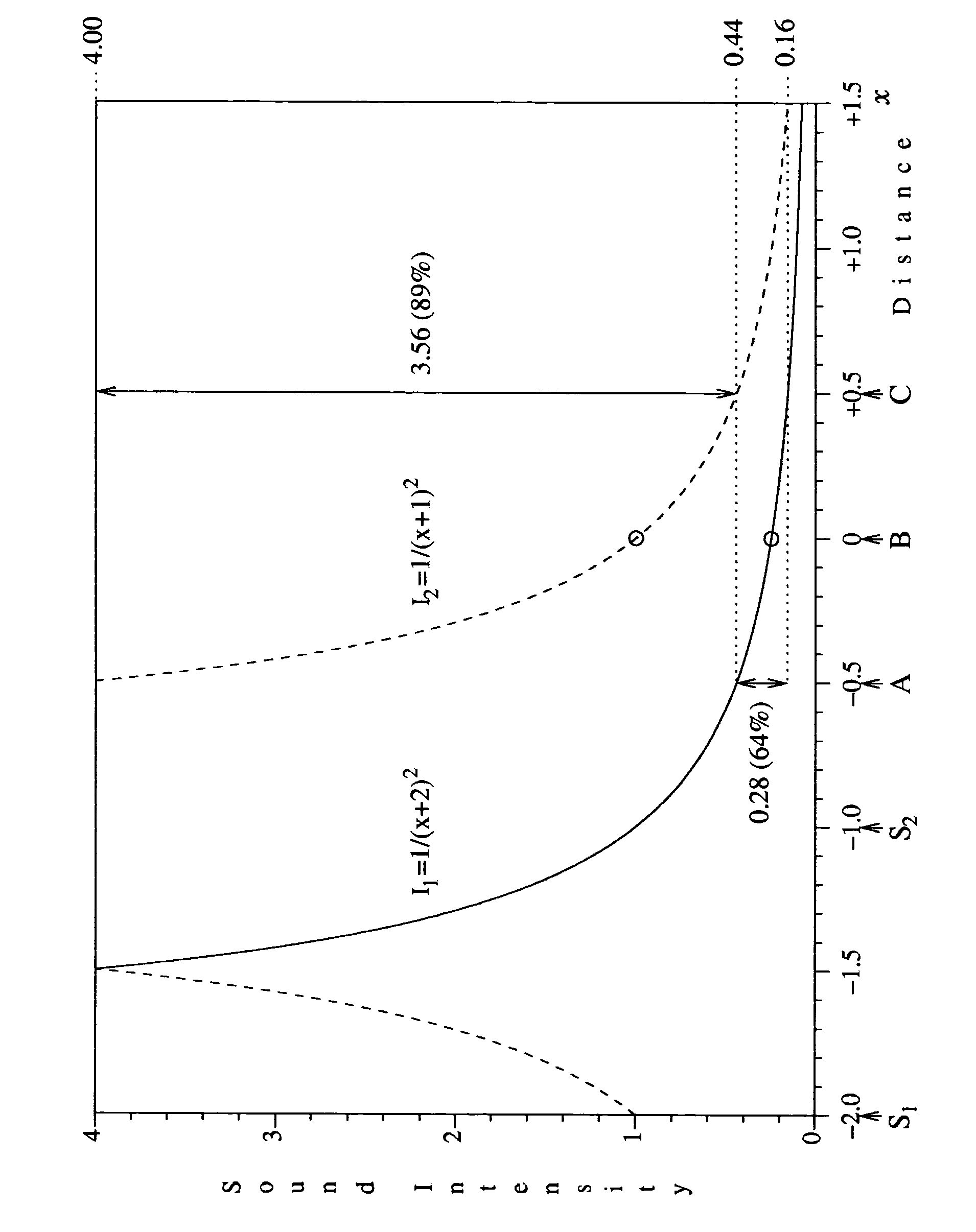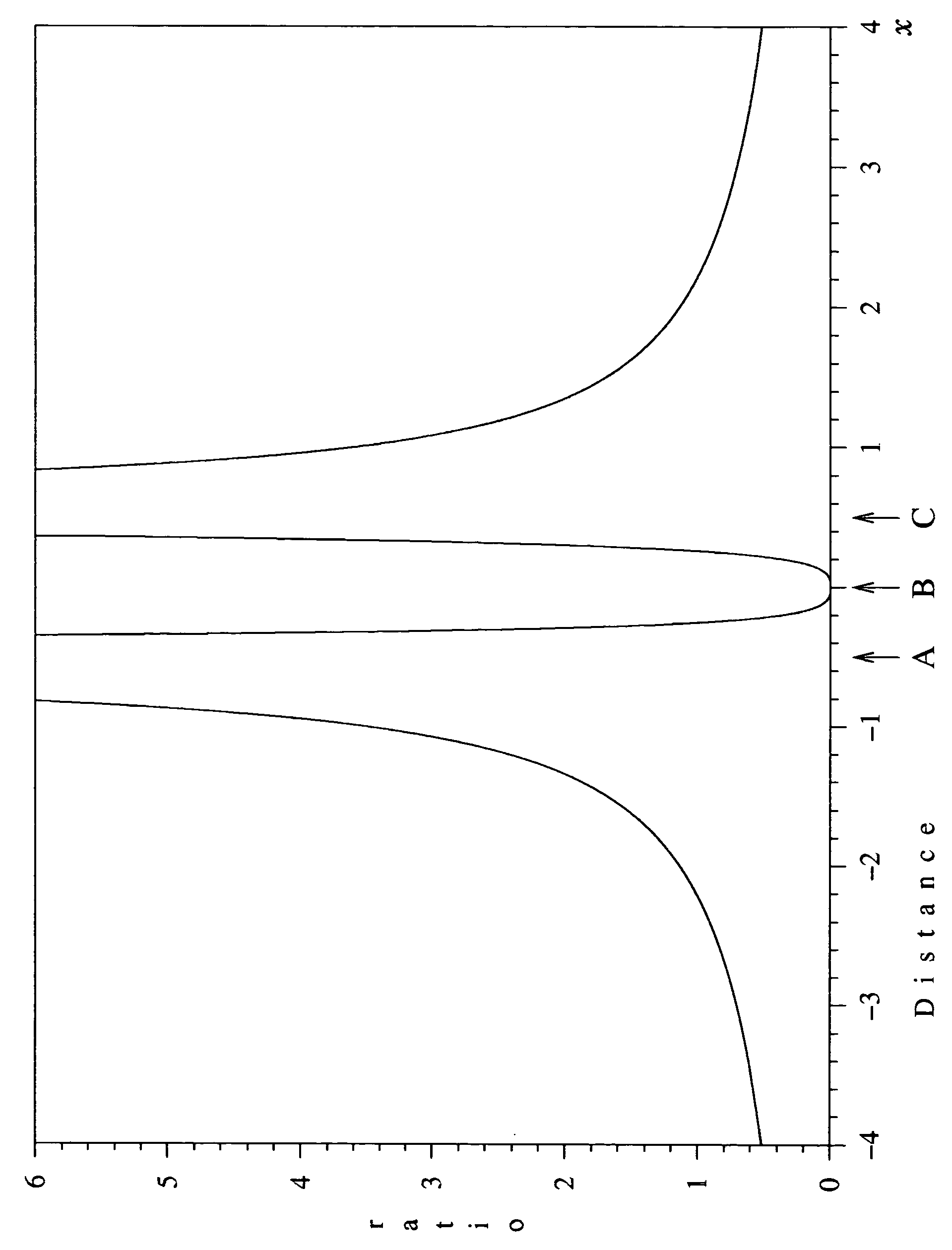Method and apparatus for focusing sound
- Summary
- Abstract
- Description
- Claims
- Application Information
AI Technical Summary
Benefits of technology
Problems solved by technology
Method used
Image
Examples
embodiments
[0072] Embodiments of the satellite-subtraction method have acoustic-electrical transducers (e.g. microphones) at the sensing sites, circuitry which accomplishes the required signal processing, and accommodation (e.g. speakers or a connector suitable for speakers) for converting the resulting signal to a form suitable for interpretation. Allowing for the fact that transducers, unlike the sampling sites of the foregoing discussion, have area, the performance of such embodiments, under test conditions in which sound travels in a uniform medium, matches the modeled values. Although only three- and four-satellite configurations were modeled (FIGS. 6 and 7), additional satellite sites may be added, consistent with the method described.
[0073] The satellite-subtraction method is suitable for use alone, or in combination with prior art. Cones, baffles, and sound-insulating materials may be used to direct sound from a selected source to or away from a given transducer. Transducers should be...
embodiment
Simple Four-Satellite Embodiment
[0083] A simple analog four-satellite embodiment of the SSM, with a fixed focus and no filter, may be constructed as diagrammed in FIG. 13. (Primes of the reference numerals used in the preferred embodiment are used for corresponding components in the simple embodiment.) This configuration may be satisfactory for use in a broadcast journalist's microphone, the signal of which will be processed further at the broadcast facility. Note that FIG. 13 further illustrates an embodiment with no capacitors in the signal path, a feature which eliminates the attenuation of low-frequency signal components due to series capacitance.
Applications
[0084] The advantages of the SSM suggest a variety of possible applications. In noisy environments, where excellent distance selectivity is desirable, a simple embodiment with a fixed focus and a fixed filter corner frequency (or no filter at all), would improve speech reception and noise rejection. Journalists conducting...
PUM
 Login to View More
Login to View More Abstract
Description
Claims
Application Information
 Login to View More
Login to View More - R&D
- Intellectual Property
- Life Sciences
- Materials
- Tech Scout
- Unparalleled Data Quality
- Higher Quality Content
- 60% Fewer Hallucinations
Browse by: Latest US Patents, China's latest patents, Technical Efficacy Thesaurus, Application Domain, Technology Topic, Popular Technical Reports.
© 2025 PatSnap. All rights reserved.Legal|Privacy policy|Modern Slavery Act Transparency Statement|Sitemap|About US| Contact US: help@patsnap.com



